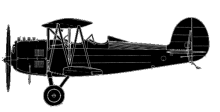
ASN Wikibase Occurrence # 294615
This information is added by users of ASN. Neither ASN nor the Flight Safety Foundation are responsible for the completeness or correctness of this information.
If you feel this information is incomplete or incorrect, you can submit corrected information.
| Date: | Sunday 22 August 2004 |
| Time: | 15:00 LT |
| Type: |  Great Lakes 2T-1A-2 |
| Owner/operator: | |
| Registration: | N1XG |
| MSN: | 1001 |
| Total airframe hrs: | 735 hours |
| Engine model: | Lycoming AEIO-360 |
| Fatalities: | Fatalities: 0 / Occupants: 1 |
| Aircraft damage: | Substantial |
| Category: | Accident |
| Location: | Elkton, Kentucky -
 United States of America United States of America
|
| Phase: | Unknown |
| Nature: | Private |
| Departure airport: | Russellville, KY (4M7) |
| Elkton, KY | |
| Investigating agency: | NTSB |
| Confidence Rating: |
Two airplanes, in loose formation, made a left break over the runway, entered the traffic pattern, and completed a landing to the turf runway. Although visible from the air, both the runway marker and stanchion were obscured by overgrown grass during the landing rollout. During its rollout, the second airplane struck an electrical conduit mounted on a stanchion, and sustained minor damage. The runway boundary marker was half of a plastic barrel, cut lengthwise, and the stanchion was about 6 feet outboard the boundary marker, 8-10 inches high. Although visible from the air, both the runway marker and stanchion were obscured by overgrown grass during the landing rollout. Boundary markers were supposed to be located about 300 feet apart, on each side of the runway; however, two consecutive left-side runway boundary markers were missing. The left-side runway boundary markers ran almost the entire length of the airport property, about in the middle of the airport's width. One-third of the airport property had been mowed the day before the accident. The mowed area was approximately L- shaped, and included the length of the field to the left of the runway, and the approach end of the runway, up to the second boundary marker. The rest of the runway had last been mowed 8 days prior to the accident, and the pilots thought they were landing on an "imaginary centerline" in the middle of the airport.
Probable Cause: The pilot's misidentification of the runway, which resulted in the airplane striking an obscured runway marker. Factors were the tailwheel airplane's reduced forward and lateral visibility during landing rollout and inadequate maintenance of the airport facility, including the failure to replace missing runway boundary markers and a confusing mowing pattern adjacent to the runway.
Accident investigation:
 |
|
Sources:
NTSB IAD04LA043
Revision history:
| Date/time | Contributor | Updates |
|---|---|---|
| 12-Oct-2022 06:58 | ASN Update Bot | Added |
Corrections or additions? ... Edit this accident description
The Aviation Safety Network is an exclusive service provided by:


 ©2024 Flight Safety Foundation
©2024 Flight Safety Foundation